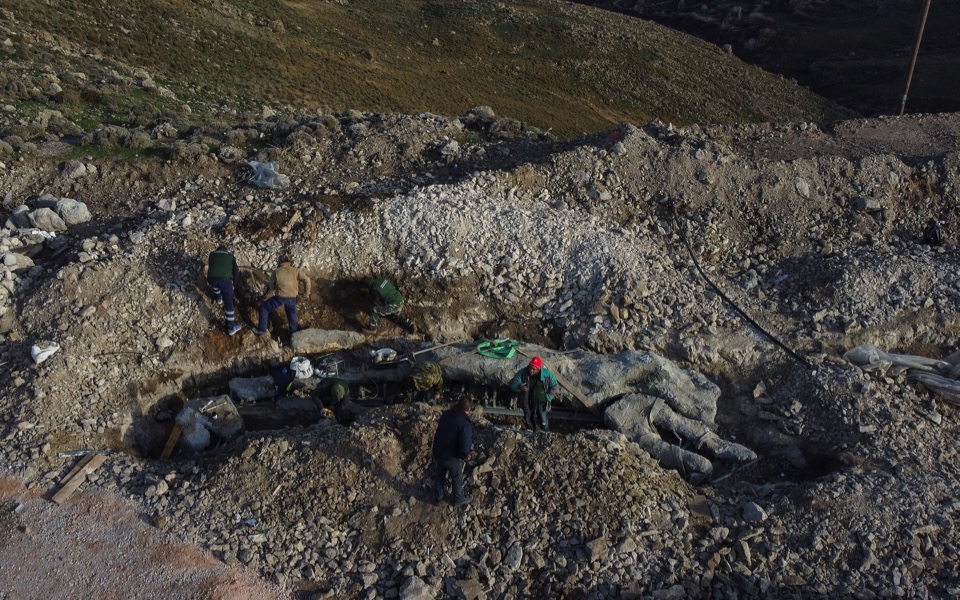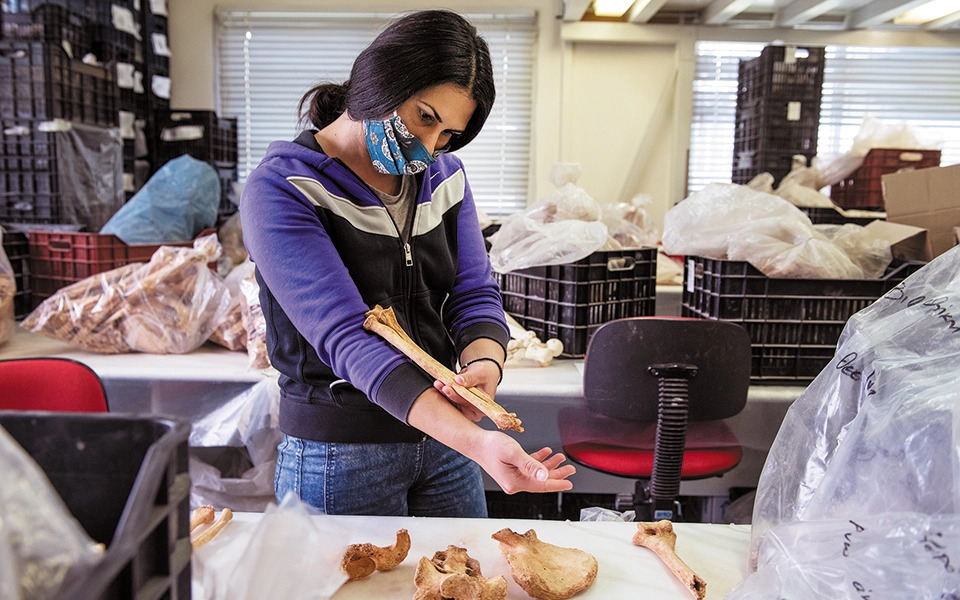The researchers refer to him as “501,” as if he were a secret agent. But the man behind the door of the Laboratory of Physical Anthropology in Komotini, a city in northeastern Greece, is long dead, and all that remains is his skeleton, spread out across a large table. Forming a circle around...

www.ekathimerini.com
The researchers refer to him as “501,” as if he were a secret agent. But the man behind the door of the Laboratory of Physical Anthropology in Komotini, a city in northeastern Greece, is long dead, and all that remains is his skeleton, spread out across a large table.
Forming a circle around him, the team of young researchers begin their examination. Despite his well-maintained condition, 501 was a man who lived 2,000 years ago and is one of thousands of skeletons found and collected by the archaeological service of the Ephorate of Antiquities of Thessaloniki. Some of them were discovered during the excavations for the northern port city’s new metro system.
Christina Papageorgopoulou, director of the Laboratory of Physical Anthropology, a part of the Democritus University of Thrace in Komotini, said: “We have in our hands 4,500 skeletons of citizens from ancient Thessaloniki, dating from the founding of the city to the post-Byzantine era. Our goal is to study their health, diet, living conditions, physical and professional activities, as well as the heritage, demography and the genetic history of Thessaloniki.”
Among the rare archaeological treasures that were unearthed during the excavations for the construction of the new metro stations, two ancient cemeteries were found – one in the east and one in the west – each with hundreds of burials. This valuable osteological material was collected and transferred to the Komotini lab.
As an associate professor who has spent more than 20 years studying osteology, Papageorgopoulou adds: “Every time I study a skeleton, I feel that I am given the chance to give another human a voice. I am in awe.” Now, she has the chance to give a voice to thousands of ancient people.
The laboratory is the only one in Greece where skeletal material is studied for archaeological and anthropological purposes, using cutting-edge technology. The new methods, like DNA analysis, allow researchers to discover remarkable details about the people’s lives. The researchers can identify sex and age as well as determine facial characteristics, injuries and illnesses. In combination with the archaeological context within which each skeleton is found, this technology allows researchers to compile an entire biography of the deceased. Papageorgopoulou aims not only to create a biography of the city of Thessaloniki, but also to uncover personal histories of both prominent and ordinary citizens.
Leaning carefully over 501, Asterios Aidonis, an anthropologist and researcher at the lab, works methodically and precisely. Holding a skull or a pelvis, he knows he is dealing with a man of 35 or 40. Very quickly, he moves on to details: “Looking at his anatomical condition, we can infer that he has broken his left arm.” Comparing both arms, he realizes that the bone had not healed properly and that the man suffered from pain throughout his life. Looking into the eye sockets, he adds that although this was a healthy man, he might have suffered from anaemia. “This is a paradox in physical anthropology. We study skeletons but what we are looking for is not death, but life,” he adds. After completing his observations, the researcher scans the skeleton using special equipment, and saves the three-dimensional imprint on a separate file. After that, the researchers begin more detailed work to determine the man’s diet and illnesses.





